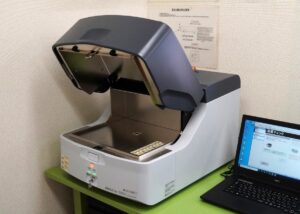SAIMA CORPROATION complies with Japanese and International Environment policies and regulations, as well as cooperate with customers’ demands/requests by offer various types of related documents. Statement of RoHS Compliance, REACH Certificate, CMRT,EMRT and chemSHEPRA are available.
Request for environment related documents-≻
- RoHS
- REACH
- chemSHERPA
- Conflict Mineral Investigation
RoHS
The RoHS compliant products determined by SAIMA CORPORATION are products that does not include the following restricted substances above the maximum levels specified by RoHS Directive
| Restricted Substances | Restricted Substances Maximum Level(%) |
| Lead (Pb) | 0.1(1,000ppm) |
| Mercury (Hg) | 0.1(1,000ppm) |
| Hexavalent Chromium (Cr VI) | 0.1(1,000ppm) |
| Polybrominated Biphenyls (PBB) | 0.1(1,000ppm) |
| Polybrominated Diphenyl Ethers (PBDE) | 0.1(1,000ppm) |
| Cadmium (Cd) | 0.01(100ppm) |
| Bis(2-Ethylhexyl) phthalate (DEHP) | 0.1(1,000ppm) |
| Benzyl butyl phthalate (BBP) | 0.1(1,000ppm) |
| Dibutyl phthalate (DBP) | 0.1(1,000ppm) |
| Diisobutyl phthalate (DIBP) | 0.1(1,000ppm) |
SAIMA RoHS Compliant mark:

Checking RoHS compliance by X ray fluorescence analyzer
In 2023, SAIMA acquired SHIMADZU made X ray fluorescence analyzer. The inspections of hazardous substance in the material and plating, as well as measurement of plating thickness are done at our laboratory.


Hexavalent chromium contents are determined using Diphenyl carbazide spectrophotometric method.

What is REACH?
Registration, Evaluation, Authorization and Restriction of Chemicals
- Regulation of the European Union
- Entered into force on 2007/6/1
- Aims to improve the protection of human health and the environment through the better and earlier identification of the intrinsic properties of chemical substances, also aims to enhance innovation and competitiveness of the EU chemicals industry.
- SVHC (Substance of Very High Concern): the launching and sales of SVHC need to be approved beforehand. However, in cases where the SVHCs concentration exceeded 0.1wt, there may be requests of report for some information.
(Up to 2024/1/23, The Candidate List of SVHCs for authorization contains 240 substances.)
What is chemSHERPA?
A scheme to transfer information of chemicals between supply chain partners, developed under the lead of Japan Ministry of Economy, Trade and Industry, managed by JAMP (Joint Article Management Promotion-consortium).
In electrical and electronic industry, there were standard schemes like Green Procurement (JGPSSI) Tool, JAMP AIS or MSDSplus. However, due to each tool being managed by different association, chemSHERPA was created as a united system for research and managing information.
Follow this, JAMP AIS, MSDSplus expired on 2018/6 and Green Procurement (JGPSSI) on 2018/7, all have been finished moving to chemSHERPA at present.
What is Conflict Mineral Investigation?
Conflict mineral are natural resources extracted in a conflict zone and sold to finance the armed groups and perpetuate the fighting. The most prominent examples are the Conflict Minerals which are extracted from and have been contributing to the deadly war in Democratic Republic of Congo (DRC) and also benefit adjoining countries.
Conflict Minerals, as defined in US legislation, Dodd-Frank Wall Street Reform and Consumer Protection Act, Section 1502, currently included the metals tantalum, tin, tungsten and gold (as known as 3TG).
Under the rules, US and certain foreign companies are required to report and make public their use of the Conflict Minerals and their source, and the requirements reaches out to all the companies in the supply chain as well.
Currently, cobalt and mica are also being investigated as expanded minerals.
